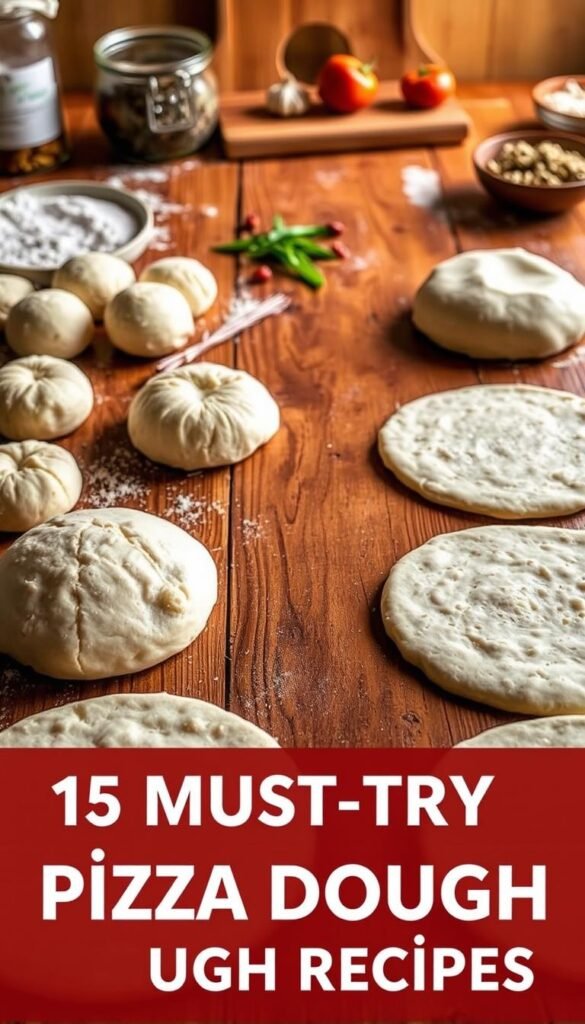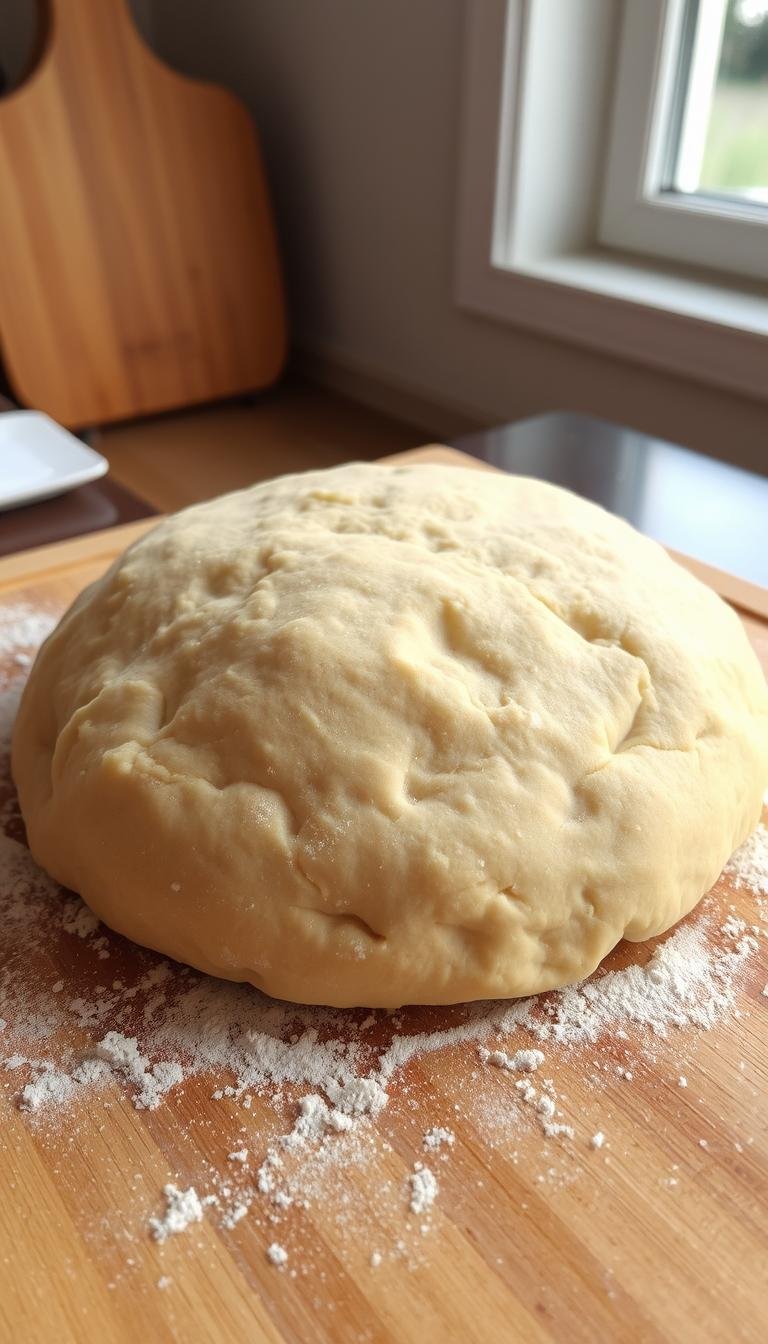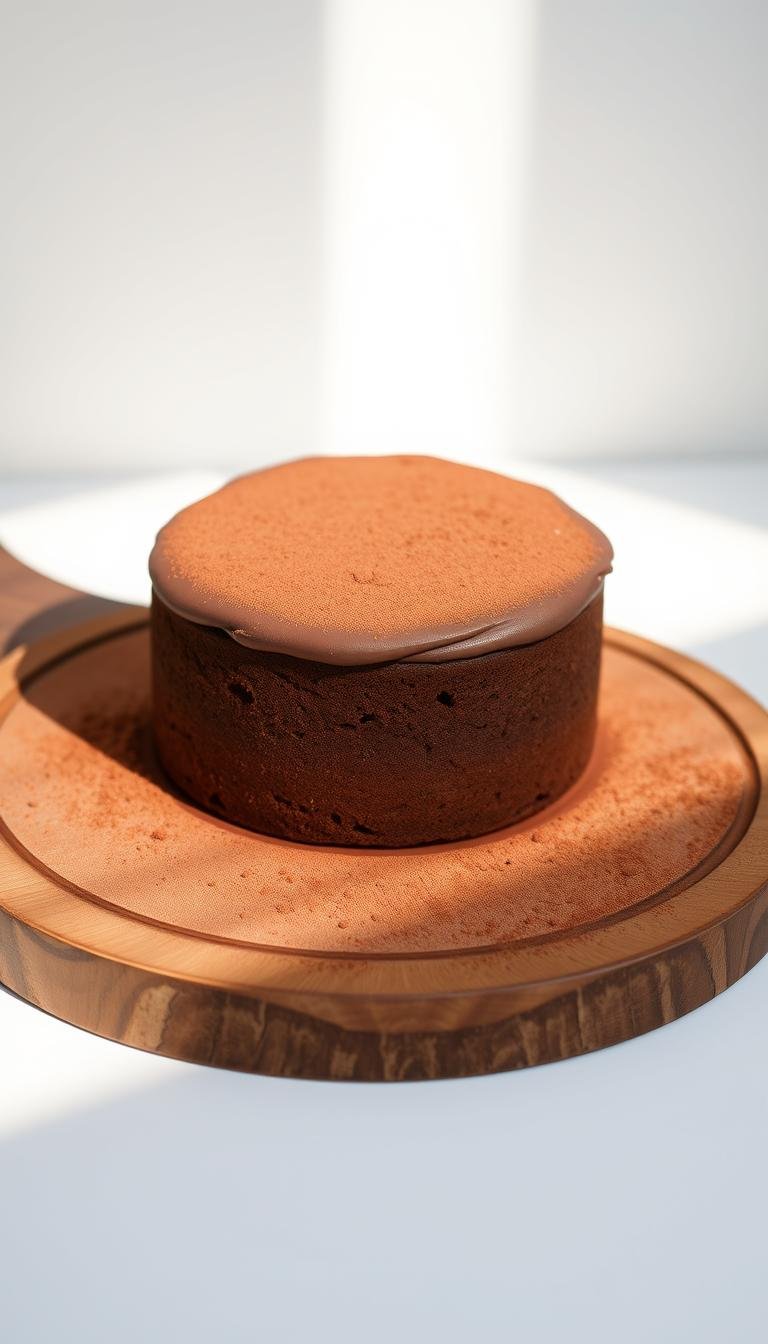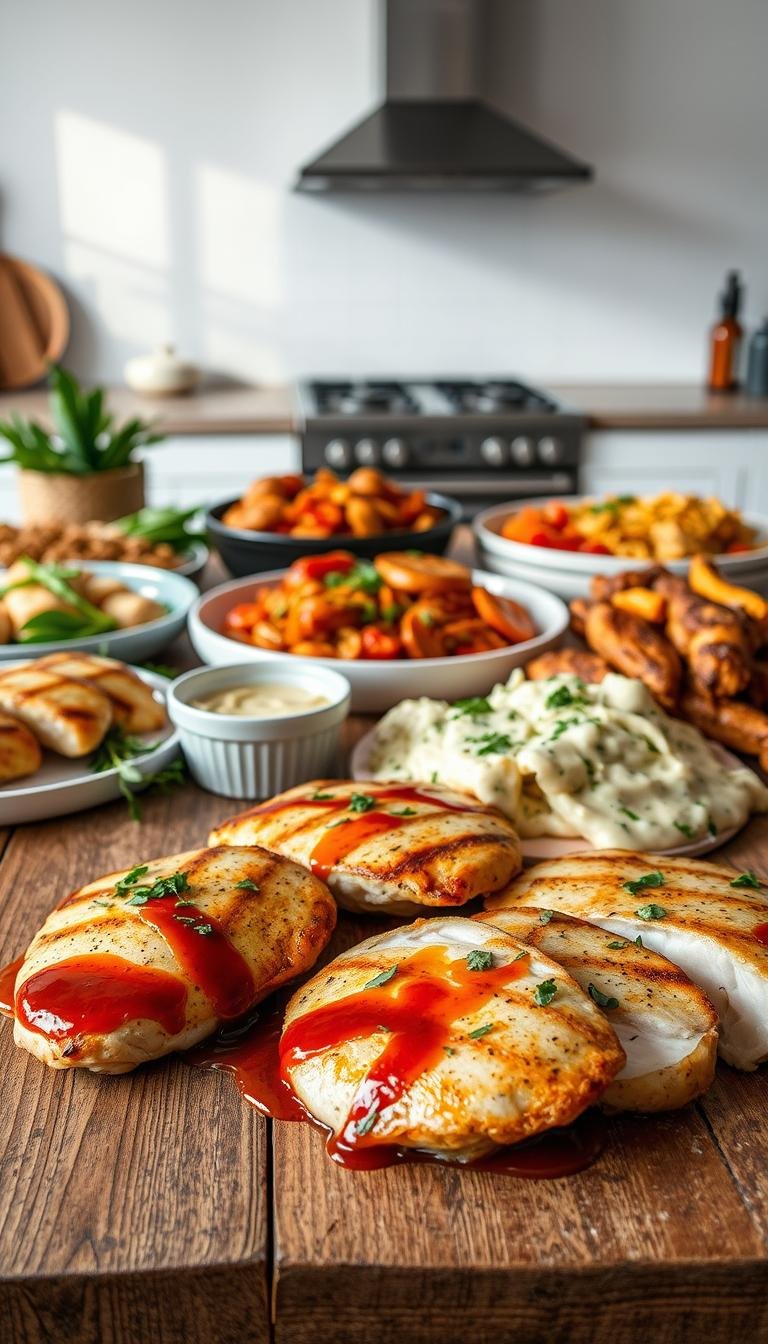15 Must-Try Homemade Pizza Dough Recipes
Making pizza at home has never been more popular, with the rise of home cooking and the quest for the perfect pie. Did you know that the global pizza market is projected to grow significantly, driven by consumers seeking gourmet experiences in the comfort of their own kitchens?
Crafting the perfect homemade pizza dough is an art that combines science and creativity. With diverse recipes available, from traditional Neapolitan to innovative options like cauliflower crust, home cooks can elevate their pizza game. This comprehensive guide explores the world of pizza making at home, offering techniques and recipes for all skill levels and dietary preferences.
Key Takeaways
- Discover diverse pizza recipes for various tastes and dietary needs.
- Learn expert tips for achieving restaurant-quality pizza at home.
- Explore traditional and innovative pizza dough recipes.
- Understand the science behind making perfect homemade pizza dough.
- Elevate your home pizza making skills with step-by-step instructions.
The Art of Homemade Pizza Dough
The art of crafting homemade pizza dough is a journey that combines tradition, science, and personal creativity. Making pizza dough from scratch connects us to centuries-old culinary traditions while allowing for personal expression and innovation.
The history of pizza dough dates back to ancient times when flatbreads were cooked in wood-fired ovens. Over time, this simple bread evolved into the diverse pizza varieties we enjoy today, from Neapolitan to New York-style and beyond. Understanding this evolution helps us appreciate the versatility of homemade pizza dough.
The science behind perfect dough involves gluten development and fermentation processes. Gluten, a protein found in wheat, provides dough with structure and elasticity. Fermentation, facilitated by yeast, contributes to the dough’s rise and flavor. Mastering these elements is key to creating exceptional homemade pizza dough.
Many believe that making homemade pizza dough is difficult or time-consuming. However, with the right knowledge, anyone can achieve professional results. The process involves mixing, kneading, proofing, and shaping – techniques that, once learned, become second nature.
Key benefits of homemade pizza dough include:
- Customization to suit dietary preferences and flavor profiles
- Cost-effectiveness compared to store-bought alternatives
- The satisfaction of creating something delicious from scratch
By embracing the art of homemade pizza dough, we not only create delicious meals but also connect with a rich culinary heritage. As we explore various recipes and techniques, we’ll discover that making pizza dough at home is both accessible and rewarding.
Essential Equipment for Making Pizza Dough at Home
The journey to making great homemade pizza starts with understanding the essential equipment needed. To create delicious pizza dough, you’ll need a combination of basic tools and, optionally, some specialized equipment to enhance your pizza-making experience.
Basic Tools Every Pizza Maker Needs
Every home pizza maker should have certain basic tools to get started. A good kitchen scale is crucial for measuring ingredients accurately, ensuring consistency in your dough. You’ll also need mixing bowls of appropriate sizes for combining ingredients and a kneading surface, which could be a countertop or a large wooden cutting board. Simple tools like a bench scraper and dough cutter can make handling and shaping the dough more efficient.
Key Basic Tools:
| Tool | Purpose |
|---|---|
| Kitchen Scale | Accurate measurement of ingredients |
| Mixing Bowls | Combining ingredients |
| Kneading Surface | Shaping and kneading dough |
| Bench Scraper | Handling and scraping dough |
Optional Equipment for Pizza Enthusiasts
For those looking to elevate their pizza game, there are several optional pieces of equipment that can be beneficial. A stand mixer with a dough hook attachment can significantly reduce the effort required for kneading. Specialized dough proofing containers can help control the environment for better fermentation. A digital thermometer can ensure that your ingredients are at the optimal temperature for yeast activation.

Key Ingredients for Perfect Pizza Dough
Crafting the perfect pizza dough begins with understanding the key ingredients that form its foundation. The quality and characteristics of these ingredients significantly impact the final product’s texture, flavor, and overall quality.
Understanding Different Flour Types
The type of flour used is crucial in determining the texture and flavor of your pizza crust. Different types of flour offer varying protein contents and gluten development properties. For instance, all-purpose flour is a popular choice for pizza dough due to its balanced protein content. Bread flour, with its higher protein content, can produce a chewier crust, while “00” flour yields a tender, fine-textured crust. Whole wheat flour adds a nuttier flavor and denser texture, and specialty flours like ancient grain or Kamut flour can introduce unique flavors and textures to your pizza.
Choosing the right flour depends on the style of pizza you’re aiming to make and your personal preference regarding crust texture and flavor.
The Role of Yeast, Water, and Salt
Beyond flour, yeast, water, and salt play critical roles in pizza dough. Yeast is responsible for fermentation, giving the dough its rise and contributing to flavor development. Different types of yeast, such as active dry, instant, or fresh yeast, offer various advantages in terms of convenience and flavor profile. Water temperature and quality significantly affect dough behavior, with mineral content influencing gluten development. Lastly, salt not only adds flavor but also controls fermentation rate and strengthens gluten structure, enhancing the dough’s overall texture and resilience.
Fundamental Techniques for Making Pizza Dough
Transforming simple ingredients into perfect pizza dough hinges on technique. The art of making pizza dough involves several critical steps, each playing a vital role in the final product’s quality and character.
Kneading Methods
Kneading is a crucial process that develops gluten, giving dough its strength and elasticity. There are several kneading methods, including hand kneading, using a stand mixer, and the no-knead technique. Hand kneading allows for a tactile connection with the dough, helping to develop gluten through manual effort. In contrast, a stand mixer with a dough hook attachment can significantly reduce kneading time and effort. The no-knead method, which relies on time rather than intense kneading to develop gluten, is ideal for those seeking a low-effort approach.

| Kneading Method | Effort Level | Resulting Crust |
|---|---|---|
| Hand Kneading | High | Chewy, Artisanal |
| Stand Mixer | Low | Uniform, Tender |
| No-Knead | Very Low | Complex Flavor, Crusty |
Proofing and Resting
Proofing and resting are critical for developing flavor and texture. Bulk fermentation allows yeast to ferment sugars, producing CO2 and contributing to the dough’s rise. The “finger dent” test can determine if dough is properly proofed. A gentle press that springs back slowly indicates readiness.
Stretching and Shaping
Once proofed, dough must be handled gently to prevent degassing. Techniques vary by pizza style: Neapolitan pizzas require gentle hand-stretching, while pan pizzas are pressed into shape. The goal is to achieve the desired thickness and shape without compromising the dough’s structure.
15 Must-Try Homemade Pizza Dough Recipes
Exploring the world of homemade pizza dough reveals a diverse array of recipes, each with its unique characteristics and flavor profiles. Whether you’re a traditionalist or an adventurous cook, these recipes will guide you in creating delicious pizzas at home.
1. Classic Neapolitan Pizza Dough
The Classic Neapolitan Pizza Dough is a foundational recipe that emphasizes simplicity and high-quality ingredients. Using “00” flour is crucial for achieving the right texture.
Ingredients and Preparation
To make this dough, you’ll need 1 kg of “00” flour, 625 ml of water, 10 g of active dry yeast, and 20 g of salt. Mix the ingredients together, then knead for 10 minutes. Let it rise for 8-12 hours.
Tips for Authentic Results
For an authentic Neapolitan pizza, bake the dough in a very hot oven (500°C/932°F) for a short time (10-12 minutes). Ensure the dough is cooked on the edges but still soft in the center.
2. New York-Style Thin Crust Dough
New York-Style Thin Crust Dough is known for its foldable yet crispy texture, achieved by adding oil and sugar to the dough.
Ingredients and Preparation
Combine 500 g of bread flour, 325 ml of water, 10 g of yeast, 10 g of salt, 20 g of sugar, and 20 g of olive oil. Knead for 10 minutes and let it rise for 1-2 hours.
Tips for Authentic Results
To achieve the characteristic crust, bake the pizza on a preheated stone at 250°C (482°F) for 15-20 minutes. The crust should be golden brown and crispy.
3. Chicago Deep Dish Pizza Dough
Chicago Deep Dish Pizza Dough is distinct due to its thick, flaky crust, made possible by the addition of cornmeal and a lamination process.
Ingredients and Preparation
Mix 500 g of all-purpose flour, 125 g of cornmeal, 375 ml of water, 10 g of yeast, 10 g of salt, and 50 g of melted butter. Laminate the dough by folding and rolling it multiple times.
Tips for Authentic Results
Bake the deep-dish pizza in a round cake pan at 220°C (428°F) for 25-35 minutes. Ensure the crust is golden brown and the edges are flaky.
4. Sicilian-Style Pizza Dough
Sicilian-Style Pizza Dough is known for its thick, fluffy texture, achieved by using a higher hydration level and more oil.
Ingredients and Preparation
Combine 500 g of bread flour, 400 ml of water, 15 g of yeast, 10 g of salt, and 50 g of olive oil. Knead for 10 minutes and let it rise for 1-2 hours.
Tips for Authentic Results
Bake the Sicilian pizza in a square pan at 200°C (392°F) for 20-25 minutes. The crust should be golden brown and fluffy.
5. Gluten-Free Pizza Dough
Gluten-Free Pizza Dough is made using a combination of rice flour, tapioca flour, and xanthan gum to mimic the texture of traditional dough.
Ingredients and Preparation
Mix 250 g of rice flour, 125 g of tapioca flour, 250 ml of water, 10 g of xanthan gum, and 5 g of salt. Knead gently and let it rest for 30 minutes.
Tips for Authentic Results
Bake the gluten-free pizza on a preheated stone at 220°C (428°F) for 15-20 minutes. Be careful not to overwork the dough.
6. Whole Wheat Pizza Dough
Whole Wheat Pizza Dough offers a nutritious alternative to traditional white flour dough, with a nuttier flavor.
Ingredients and Preparation
Combine 500 g of whole wheat flour, 325 ml of water, 10 g of yeast, and 10 g of salt. Knead for 10 minutes and let it rise for 1-2 hours.
Tips for Authentic Results
To maintain lightness, avoid overworking the dough. Bake at 220°C (428°F) for 15-20 minutes.
7. Sourdough Pizza Crust
Sourdough Pizza Crust utilizes a natural starter for leavening, providing a tangy flavor and chewy texture.
Ingredients and Preparation
Mix 500 g of bread flour, 350 ml of water, 150 g of sourdough starter, and 10 g of salt. Knead for 10 minutes and let it rise for 4-6 hours.
Tips for Authentic Results
Maintain your sourdough starter regularly. Bake the pizza at 250°C (482°F) for 15-20 minutes.
8. Quick No-Rise Pizza Dough
Quick No-Rise Pizza Dough is ideal for time-pressed cooks, using baking powder as a leavening agent.
Ingredients and Preparation
Combine 500 g of all-purpose flour, 325 ml of water, 10 g of salt, and 15 g of baking powder. Mix well and let it rest for 10 minutes.
Tips for Authentic Results
Bake the pizza immediately at 220°C (428°F) for 12-15 minutes. The crust should be cooked through but not too brown.
9. Beer-Infused Pizza Dough
Beer-Infused Pizza Dough adds a unique flavor dimension, with different beers affecting the taste profile.
Ingredients and Preparation
Mix 500 g of bread flour, 250 ml of beer, 125 ml of water, 10 g of yeast, and 10 g of salt. Knead for 10 minutes and let it rise for 1-2 hours.
Tips for Authentic Results
Experiment with different beer styles to find your preferred flavor. Bake at 220°C (428°F) for 15-20 minutes.
10. Keto-Friendly Low-Carb Pizza Dough
Keto-Friendly Low-Carb Pizza Dough uses almond flour and coconut flour to create a low-carb crust.
Ingredients and Preparation
Combine 250 g of almond flour, 125 g of coconut flour, 250 ml of eggs, 10 g of salt, and 10 g of xanthan gum. Mix well and let it rest for 10 minutes.
Tips for Authentic Results
Be careful not to overbake, as the crust can become dry. Bake at 200°C (392°F) for 12-15 minutes.
11. Herb-Infused Pizza Dough
Herb-Infused Pizza Dough incorporates fresh or dried herbs into the dough for added flavor.
Ingredients and Preparation
Mix 500 g of bread flour, 325 ml of water, 15 g of yeast, 10 g of salt, and 20 g of chopped fresh herbs. Knead for 10 minutes and let it rise for 1-2 hours.
Tips for Authentic Results
Choose herbs that complement your toppings. Bake at 220°C (428°F) for 15-20 minutes.
12. Stuffed Crust Pizza Dough
Stuffed Crust Pizza Dough involves placing cheese or other fillings inside the crust before baking.
Ingredients and Preparation
Combine 500 g of bread flour, 325 ml of water, 10 g of yeast, and 10 g of salt. Knead and let it rise. Then, shape the dough and fill the edges with cheese.
Tips for Authentic Results
Seal the edges well to prevent filling from escaping. Bake at 220°C (428°F) for 15-20 minutes.
13. Vegan Pizza Dough
Vegan Pizza Dough substitutes eggs and honey with plant-based ingredients, making it suitable for vegans.
Ingredients and Preparation
Mix 500 g of bread flour, 325 ml of water, 10 g of yeast, 10 g of salt, and 20 g of maple syrup. Knead for 10 minutes and let it rise for 1-2 hours.
Tips for Authentic Results
Use plant-based milk and egg substitutes as needed. Bake at 220°C (428°F) for 15-20 minutes.
14. Overnight Refrigerated Dough
Overnight Refrigerated Dough benefits from a slow fermentation process, enhancing flavor development.
Ingredients and Preparation
Combine 500 g of bread flour, 325 ml of water, 5 g of yeast, and 10 g of salt. Mix, knead, and refrigerate overnight.
Tips for Authentic Results
Allow the dough to come to room temperature before shaping. Bake at 220°C (428°F) for 15-20 minutes.
15. Cauliflower Pizza Crust
Cauliflower Pizza Crust is a low-carb alternative made from cauliflower, ideal for keto diets or those reducing carbohydrate intake.
Ingredients and Preparation
Grate 500 g of cauliflower and microwave until soft. Mix with 1 egg, 50 g of grated cheese, and 5 g of salt. Shape into a crust.
Tips for Authentic Results
Remove excess moisture from the cauliflower to prevent a soggy crust. Bake at 200°C (392°F) for 15-20 minutes.
| Recipe | Key Ingredients | Baking Time |
|---|---|---|
| Classic Neapolitan | “00” flour, water, yeast, salt | 10-12 minutes |
| New York-Style Thin Crust | Bread flour, water, yeast, salt, sugar, oil | 15-20 minutes |
| Chicago Deep Dish | All-purpose flour, cornmeal, water, yeast, salt, butter | 25-35 minutes |
| Sicilian-Style | Bread flour, water, yeast, salt, oil | 20-25 minutes |
| Gluten-Free | Rice flour, tapioca flour, water, xanthan gum, salt | 15-20 minutes |

Pairing Dough Types with Toppings
Matching dough types with appropriate toppings is crucial for creating pizzas that are both delicious and well-balanced. The right combination enhances the flavors and textures of both the crust and the toppings, leading to a more enjoyable dining experience.

Classic Combinations
Classic pizza combinations have stood the test of time for a reason. For Neapolitan dough, minimal, high-quality toppings such as San Marzano tomatoes, fresh mozzarella, and basil are ideal. This simplicity allows the dough’s distinctive texture and flavor to shine. New York-style thin crust pizzas, on the other hand, benefit from a balanced cheese-to-sauce ratio and traditional toppings that complement its structural integrity. For Chicago deep dish pizzas, the layering technique is crucial to prevent sogginess despite the abundance of toppings.
Key to Success: Balance is essential. The moisture content, flavor intensity, and weight of the toppings must be considered to achieve harmony with the dough.
Creative Pairings for Specialty Doughs
For specialty doughs, creative topping pairings can elevate the pizza experience. Gluten-free crusts benefit from toppings that add moisture, such as fresh vegetables or olive oil. Whole wheat dough pairs well with robust flavors that stand up to its nuttiness, like caramelized onions or roasted garlic. Herb-infused doughs are complemented by toppings that enhance rather than compete with the herbs, such as pairing rosemary-infused dough with lamb or garlic.
“The art of pairing dough with toppings is not just about throwing ingredients together; it’s about creating a symphony of flavors and textures.” – Pizza Expert
For keto and cauliflower crusts, rich toppings like high-quality meats or creamy cheeses add depth without overwhelming the delicate crust. The key is to balance flavors and textures, ensuring that neither the crust nor the toppings overpower each other.
Common Pizza Dough Problems and Solutions
Making pizza dough at home can be a rewarding experience, but it’s not without its challenges. Understanding and addressing common issues is crucial for achieving the perfect crust.
Dough Too Sticky or Too Dry
One of the most common issues with pizza dough is improper hydration, leading to dough that’s either too sticky or too dry. For sticky dough, gradually incorporate small amounts of flour until you achieve the right consistency. Conversely, if the dough is too dry, add water by the teaspoon, mixing well after each addition. It’s essential to make these adjustments slowly and patiently, allowing the ingredients to fully incorporate.
Dough Not Rising Properly
When dough fails to rise properly, it can be due to several factors, including inactive yeast, incorrect water temperature, or unfavorable environmental conditions. To troubleshoot, first test the viability of your yeast by mixing it with warm water and sugar; if it doesn’t foam, it’s time to replace the yeast. Ensure your water is at the right temperature (around 100°F to 110°F) for yeast activation. Additionally, provide a warm, draft-free environment for proofing, and adjust yeast quantities based on temperature conditions.
Crust Too Tough or Too Soft
The texture of your crust can be affected by several factors, including overmixing, flour type, and proofing time. A tough crust might result from overmixing or using high-protein flour without adequate hydration. To remedy this, adjust your kneading time and technique. On the other hand, a crust that’s too soft might be due to undermixing or excessive hydration. Balance your ingredients and ensure proper mixing to achieve the desired texture.
Bubbles and Uneven Cooking
Bubbles and uneven cooking can detract from your pizza’s overall quality. To prevent large bubbles, properly dock your dough by gently pressing your fingers or a fork into the surface. For even cooking, ensure your dough is stretched uniformly and your oven is at the correct temperature. Using a preheated pizza stone or steel can also help achieve a crispy, evenly cooked crust.
| Problem | Cause | Solution |
|---|---|---|
| Dough too sticky | Too much water | Add flour gradually |
| Dough too dry | Too little water | Add water by teaspoon |
| Dough not rising | Inactive yeast or wrong water temperature | Test yeast, adjust water temperature |
| Crust too tough | Overmixing or wrong flour | Adjust kneading time and flour type |
Storing and Freezing Homemade Pizza Dough
Proper storage techniques can significantly extend the life of your homemade pizza dough, allowing you to enjoy freshly baked pizzas at your convenience. Whether you’re looking to refrigerate your dough for short-term use or freeze it for longer storage, understanding the best practices is crucial.
Refrigeration Methods
Refrigerating your pizza dough can slow down the fermentation process, allowing for a more complex flavor development. To refrigerate your dough effectively, it’s essential to store it in a container that allows for expansion while preventing drying out. Use airtight containers or plastic bags, ensuring they are lightly oiled to prevent the dough from sticking. The timing of refrigeration during the fermentation process can impact the final flavor and texture. For most dough types, refrigerating after the first rise is ideal. High-hydration doughs may require adjusted timelines to prevent over-proofing.
When you’re ready to use your refrigerated dough, allow it to come to room temperature and gently fold it to redistribute the yeast before shaping and baking.
Freezing and Thawing Techniques
For longer-term storage, freezing your pizza dough is an excellent option. To freeze effectively, it’s crucial to portion your dough into manageable sizes before wrapping them tightly in plastic wrap or aluminum foil, ensuring they’re airtight to prevent freezer burn. Partially fermenting your dough before freezing can help achieve a better texture upon thawing. When you’re ready to bake, you can thaw your frozen dough in the refrigerator overnight or at room temperature for a few hours, depending on your urgency.
To maintain dough quality, avoid thawing in a microwave, as it can lead to uneven textures. With proper freezing and thawing techniques, you can enjoy homemade pizza dough that’s almost as fresh as the day it was made.
Cooking Surfaces for Perfect Pizza Crust
The right cooking surface can elevate your homemade pizza to a whole new level. Achieving a perfect pizza crust at home is largely dependent on the cooking surface used, as it directly impacts the crust’s crispiness, texture, and overall flavor.
Different cooking surfaces offer unique benefits and can significantly affect the final result of your pizza. Understanding the characteristics of various surfaces and how to use them effectively is key to achieving a restaurant-quality crust.
Pizza Stones and Steel
Pizza stones and steel are two popular options for home cooks looking to achieve a perfect crust. Pizza stones provide even heat distribution, which helps to cook the crust uniformly. They absorb moisture from the dough, resulting in a crispy crust. To use a pizza stone effectively, preheat it in the oven at 500°F (260°C) for at least 30 minutes before cooking. When transferring the pizza to the stone, use a pizza peel or parchment paper to prevent damage to the crust.
- Preheat the stone for at least 30 minutes
- Use a pizza peel or parchment paper for transfer
- Clean the stone regularly to prevent flavor transfer
Pizza steel, on the other hand, offers superior heat conductivity compared to stones. This means it can cook pizzas faster and at higher temperatures, resulting in a crisper crust. Pizza steel is typically more durable than stone and can withstand higher temperatures.
Cast Iron Pans
Cast iron pans are another excellent option for cooking pizzas, especially for styles like Chicago deep-dish or pan pizzas. The heat retention properties of cast iron create a perfectly crisp bottom crust. To use a cast iron pan for pizza, preheat it in the oven at 425°F (220°C) for 10-15 minutes. Then, carefully place the dough in the hot pan and add your toppings.
- Preheat the cast iron pan in the oven
- Season the pan regularly to maintain non-stick properties
- Cook the pizza on the stovetop for a minute or two after baking for an extra crispy crust
Baking Sheets and Other Alternatives
Not everyone has a pizza stone or cast iron pan, but you can still achieve great results with more common kitchen items. Baking sheets are a readily available alternative. To optimize results, preheat the baking sheet in the oven before adding the pizza dough. You can also use an inverted sheet pan to create a makeshift pizza stone.
- Preheat the baking sheet for better crust crispiness
- Use parchment paper to prevent sticking
- Consider using a broiler pan for improved air circulation under the pizza
By understanding the characteristics of different cooking surfaces and how to use them effectively, you can significantly improve the quality of your homemade pizzas. Whether you’re using a pizza stone, cast iron pan, or baking sheet, the right techniques and preheating procedures can help you achieve a delicious, crispy crust that rivals your favorite pizzeria.
Conclusion
Making pizza dough from scratch is an accessible skill and a rewarding culinary adventure that improves with practice. The 15 diverse recipes explored in this guide demonstrate the versatility of homemade pizza, allowing you to start with a style that appeals to your taste preferences and dietary needs. By applying the fundamental principles of quality ingredients, proper technique, and patience during fermentation, you’ll be well on your way to pizza dough mastery.
As you experiment with different best pizza dough recipes and techniques, remember that perfect pizza is subjective. The joy lies in developing a personal style that suits your taste buds. With these homemade pizza tips, you’re encouraged to try new recipes, explore different toppings, and refine your skills. Each batch will build your confidence and expertise in homemade pizza creation, making the journey as enjoyable as the destination.






